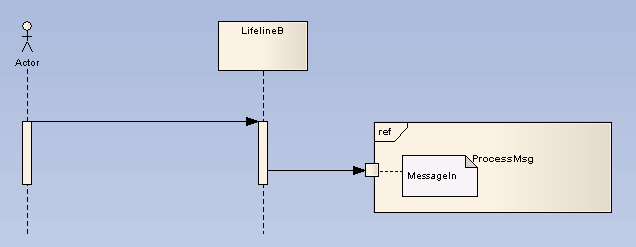
A Diagram Gate is a simple graphical way to indicate the point at which messages can be transmitted into and out of interaction fragments. A fragment might be required to receive or deliver a message; internally, an ordered message reflects this requirement, with a gate indicated on the boundary of the fragment's frame. Any external messages 'synching' with this internal message must correspond appropriately. Gates can appear on interactions (such as Timing or Sequence diagrams), interaction occurrences and combined fragments (to specify the expression).

Toolbox Icon
![]()
OMG UML Specification
The OMG UML specification (UML Superstructure Specification, v2.0, p. 418) states:
"A Gate is a connection point for relating a Message outside an InteractionFragment with a Message inside the InteractionFragment ... Gates are connected through Messages. A Gate is actually a representative of an EventOccurrence that is not in the same scope as the Gate. Gates play different roles: we have formal gates on Interactions, actual gates on InteractionOccurrences, expression gates on CombinedFragments."


